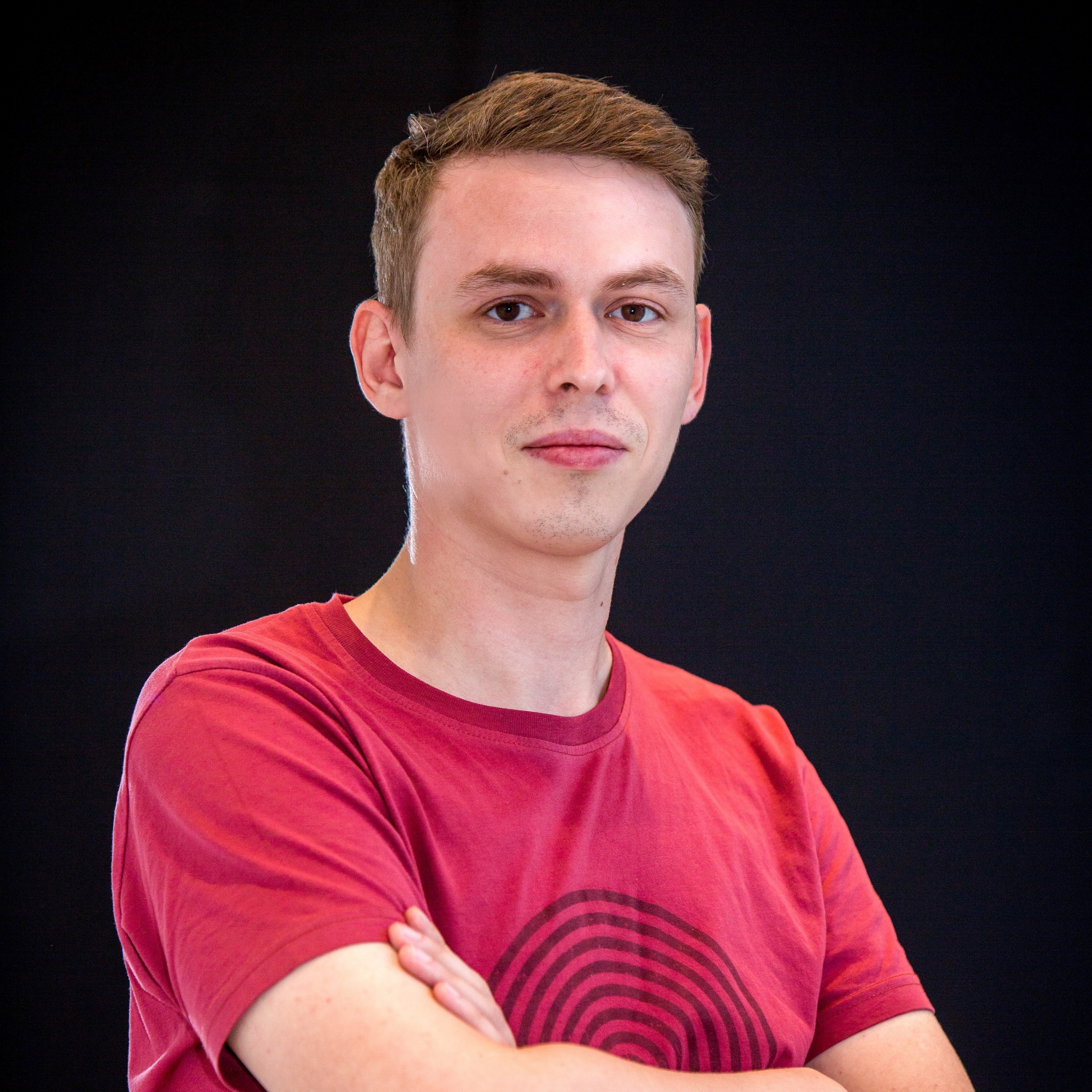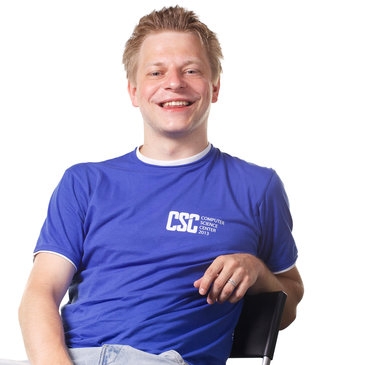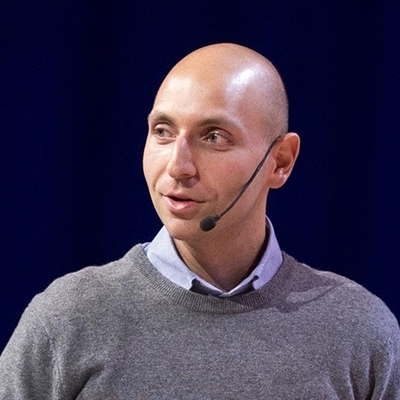Open Testing Conference Free Broadcast - Heisenbug 2018 Piter

Conference : Heisenbug 2018 PiterHeisenbug 2018 Piter will be held the day after tomorrow. The main conference hall will be broadcast free on YouTube. How to get to the broadcast and what will be there, we will tell under the cut.
Date : May 17-18, 2018
Location : St. Petersburg, Park Inn by Radisson Pulkovskaya Hotel
You can watch the broadcast online at this link.
The share of English speakers continues to grow. Three reports in English will get to the free broadcast - and which ones! They will be led by two famous figures in the testing world: Simon Stewart and Michael Bolton.
- Simon Stewart is the creator of WebDriver, the leader of the Selenium project. He worked in two dream companies - Facebook and Google, and threw them in order to develop Selenium. On Facebook, he was head of the build tools team (they developed the Buck system), and before that, he worked for Google for five years and another three for ThoughtWorks. He knows a lot about unusual things, like mono-repositories and reproducible assemblies. His report is worth listening to, because this is a person who was directly at the origin of many tools that we use every day.
- Michael Bolton is a tester, consultant, and co-author of RST (along with James Bach). About him we have a separate article . Rapid Software Testing is a methodology and mindset that allows you to test under pressure and time constraints. Michael is the leader of the context-oriented testing movement, having more than twenty years of experience in testing, developing, managing software development. He currently leads DevelopSense, a consulting company in Toronto. He has two reports at the conference, which are worth listening to because of the vast practical concentrated experience that he puts into each of his speeches.
')
By the way, another famous speaker - Vitaly Friedman , especially for us will hold a report in Russian. “Testing to the last” continues its stories about the development of interfaces, this time it will be told about the problems of responsive user interfaces, the perfect accordion, date and time pointers, comparative tables, and much more.
We also clarified a common set of topics, technologies and programming languages. For example, the dominant framework was Selenium in Java, but on this Heisenbug many new things were added. Zodod in a free broadcast report got Artem Eroshenko about Allure .
Interestingly, the nature of discourse has changed recently, and participants want from the testing conference more and more hardcore reports and less and less traditional topics like load testing. It seems that everyone has finally learned to do the workload and they want to go further. So the report “Testing on the basis of Petri nets” by Alexey Rodionov about the transition from conventional tests to model-based testing got into the free broadcast.
What about other topics? In Moscow, there was no report about security, and now there will be . Many reports on unusual topics, two of them were broadcast:
- Anastasia Semenyuk will talk about Beta testing on VKontakte, testing large-scale updates and completely new products, developing a community of 12 thousand testers, processing tens of thousands of bug reports and so on.
- Olga Megorskaya will tell about crowdsourcing in Yandex .
In general, the conference has grown in size and as reports.
We remind you that you can watch the broadcast online at this link .
For those who are too lazy to follow the link to the site, further there is a description of the reports under the spoilers.
The first day
Shipping is a risky business
Program Committee Commentary:
Want to hear the opinion of the author of Selenium WebDriver about testing in our world? Come!
Businesses do not write and release software for it. They write code to meet business needs. Of course, there is no software, there are no opportunities, missed opportunities, and no normal sprinkling of errors. It means that the costs of failure to push it out. Because we’re human, it’s not just the fear of risk.
It is possible to follow this procedure. In particular, how can you testers contribute as low as possible? Over the course of this talk, we'll recast the software development lifecycle as a conversation about risk. We will discuss the situation.
 Simon Stewart / The Selenium Project
Simon Stewart / The Selenium ProjectIt is a project of the Selenium project lead. He previously led the team to develop a graph-based build tool, Buck, and being a strong advocate of monorepos. Before joining Facebook, he spent almost five years on Google, and three at ThoughtWorks. He's seen a lot of code.
It is an undeniably hairy.
Crowdsourcing Testing
Program Committee Commentary:
What will happen if testing will be taken by many, many people who have never had anything to do with IT? Can anything good come out of this? Can!
We want to talk about how we in Yandex have solved the problem of scaling manual regression testing tasks using crowdsourcing.
Regression testing is a very important part of working on product quality. And the more products you have and the faster they develop, the more effort you need to spend on it.
Over the past year, we have learned how to scale up the manual testing tasks for most Yandex products with the help of assessors - remote employees working part-time on a piece-rate basis, and now more than 700 assessors take part in testing our products in addition to full-time testers.
In the report we will tell:
- how it was possible to make the tasks of manual testing as formalized as possible and train them to hundreds of remote employees;
- how it was possible to put the process on industrial rails, to ensure testing in various environments, to withstand the SLA in speed and quality;
- what difficulties we faced and how they were solved (and some have not yet decided);
- how test assessors contributed to the development of Yandex products, how it affected the frequency of releases and the number of bugs skipped.
 Olga Megorskaya / Yandex
Olga Megorskaya / YandexHead of the Tolok crowdsourcing platform and management of expert evaluations of Yandex.
Currently he is responsible for automating, scaling and applying crowdsourcing in various areas and projects in Yandex: data collection for artificial intelligence training, call centers, customer support services, content moderation, data production for maps, translations, and many others.
One of the recent projects is the construction of manual testing processes using crowdsourcing.
His area of interest is mathematics in the world of expert assessments, the author of reports and articles on this topic.
Testing based on Petri nets
Program Committee Commentary:
The use of a mathematical apparatus for creating tests can be called Test 2.0. Alexey will tell how this problem was solved on his project, will show alternative ways of developing tests using graph theory.
What to do when tests are fundamentally incapable of finding errors that occur during unusual states of the system under test, usually called the “edge cases”? Is it possible to increase the test coverage and find more errors without creating unnecessary tests and without sacrificing the time to complete them?
In this report we will talk about how we encountered this problem in Toptal, started the transition from conventional tests to model-based testing, which problems we encountered on this way, why we use Petri nets instead of state machines, and what we got in the end . The report will be illustrated with examples of Petri nets and a variety of Ruby-code.
 Alexey Rodionov / Toptal
Alexey Rodionov / ToptalHe has been testing for more than 11 years, of which for the last 5 years he has been helping to improve quality in Toptal, the world's largest distributed community of high-class specialists. Mozilla Contributor Developer Watir. The committer of Selenium, where it is responsible for the Ruby-part.
Don't repeat yourself: UI tests for web, iOS and Android at the same time
Program Committee Commentary:
Making successful multiplatform tests is not so difficult (success story).
No one is surprised that the product has a web version and a mobile application. In this case, UI tests are most often written separately for each platform. Very often, we get different frameworks, test runners, sometimes even languages, and at the same time support for this zoo. Then, with changes in product behavior, you have to change the same thing in several places.
Let's see how, based on open source solutions, you can quickly organize E2E tests that will work both on the web and in mobile applications, as well as what difficulties will arise with a similar solution. The approach will be demonstrated on the Python stack, but can be easily transferred to another stack.
#python #web #mobile
 Igor Balagurov / Uptick
Igor Balagurov / UptickLast year, Igor is engaged in automated testing in the Uptick startup. Basically he writes tests in Python for UI (Web + Mobile) and API (REST + GraphQL) and a little on .NET (Component and Integration tests). Before that, he worked in New Cloud Technologies, where he gained experience in writing and supporting more than a thousand web tests on Ruby, Watir, Cucumber.
10,000,000 tests per day
Program Committee Commentary:
Well, when you have a lot of autotests, and it becomes a bit difficult when their number exceeds reasonable limits for various reasons. Sergey has a unique experience of launching a huge number of tests simultaneously on multiple platforms, which he will share.
Once a small QA-team was assigned the task: to run all the tests for two days, regardless of the number that grows, grows and continues to grow. At the time of the report tests already tens of millions. And this is a story about how we built processes and infrastructure, into which puddles we sat down, and which we went around, and, most importantly, how we stopped being afraid and loved big numbers.
 Sergey Grinev / Azul Systems
Sergey Grinev / Azul SystemsTimlide QA / Release team in Azul Systems, responsible for Zulu OpenJDK. Prior to that, he worked for a long time at Oracle, where he was involved in QA JavaFX and Java2D. Loves sharing his experience at conferences and on stackoverflow.com
The logic of verification
Program Committee Commentary:
Michael does not need comments.
Software testing is sometimes referred to as a test goal. But we’ve checked and verified. This is not a bad thing to say; checking can be very valuable. It is important that it is in our testing strategies.
We have been able to complete our report. He'll also identify ways of testing, experimentation and critical thinking.
 Michael Bolton / DevelopSense
Michael Bolton / DevelopSenseTester, Consultant, and Trainer of the Rapid Software Testing, Over the past two years of experience, developing, managing, and writing about software. Currently, he leads DevelopSense, a Toronto-based consultancy. Prior to DevelopSense, Michael was with Quarterdeck Corporation. Michael's home page is www.developsense.com .
Second day
How a developer learn to build a test pyramid
Program Committee Commentary:
Test pyramids without bicycles and crutches.
We hear from everywhere about how important it is to build pyramids so that testing becomes fast, simple, reliable. But why nobody does it? We will discuss:
- Which of the tests at which level should be written to build a pyramid;
- How to create multiple pyramids, given that many projects today actually consist of two subprojects: backend & UI;
- What should be the architecture of the application to allow writing more low-level tests;
- What moki help, and what prevent to build high-quality testing.
The report is focused on developers and project managers.
 Stanislav Bashkir / EPAM Systems
Stanislav Bashkir / EPAM SystemsDevelops since 2008, mainly in Java. Always testing and quality code. At some point I began to get involved in process optimization and in 2013 switched to CI / CD activity. I have never been completely satisfied with the work of AQA, and therefore in 2015 I went into testing to prove that everything can be done much better. Proved and went into business analysis.
Are you still sawing your report? Then we go to you!
Program Committee Commentary:
Brand new Allure 3.0.
Since the release of the second version of Allure, a year has passed. During this time, we have greatly increased the number of tests, we moved to new tools and learned how to visualize information about the quality of our tests. All these changes were reflected in Allure, and we released a new major version of our report.
The report will be equally interesting both to those unfamiliar with the Allure-report, and active users. We have added quite a few new features. Come, it will be interesting!
 Artem Eroshenko / QametaSoftware
Artem Eroshenko / QametaSoftwareMore than 8 years of experience in automating web application testing. During this time, he worked in different teams and in different roles: testing automator, testing tool development team manager, testing automation team leader. Artyom has extensive experience with popular tools (Selenium, HtmlElements, Allure, Jenkins). Programs mainly in Java, Groovy.
We test to the last: smart responsive interface design patterns
Program Committee Commentary:
In the report you will learn about all the intricacies of how UX affects the product, you can understand what you should pay attention to when testing.
In the report, Vitaly will conduct a detailed study of common interface components and the problems of responsive user interfaces.
Consider what a perfect accordion is, date and time indicators, comparative tables, an insurance calculator, a car configurator, and more.
Attention! You may not be able to forget everything that you learn during the report.
 Vitaly Friedman / Smashing Magazine
Vitaly Friedman / Smashing MagazineVitaly Friedman loves beautiful content and never just gives up. Originally from Minsk, Belarus, Vitaly studied computer science and mathematics in Germany, where he discovered an interest in typography, writing and design. Having worked as a freelance designer and developer for six years, he founded Smashing Magazine, one of the leading online magazines on design and web development. Vitaly is the author, co-author and editor of all Smashing Books. He currently holds the position of chief editor of Smashing Magazine in the beautiful city of Freiburg, Germany.
Web security testing starter kit
Program Committee Commentary:
An introduction to web application security testing from a researcher, bounty hunter, a trainer who has found many critical vulnerabilities, including on Facebook.
The report will tell about the simple steps that will make the web application safer.
We will tell you how to look for vulnerabilities, what threats to users and services they carry.
More details on the most common: XSS, SQL injection, SSRF, XXE.
We will talk about the tool (Burp Suite), which will facilitate the process of searching for vulnerabilities. And a couple of other useful tools.
The report is designed both for developers - it will allow to understand the essence of vulnerabilities and why they arise, and for testers - will help to understand how to look for these vulnerabilities. Managers will be able to understand the threats that carry vulnerabilities and review the value of the application security process.
After the report, the audience will get the basic knowledge necessary to test the web application for security.
 Andrey Leonov / SEMrush
Andrey Leonov / SEMrushThe last ten years, has been searching for vulnerabilities in web applications. Member of many Bug Bounty programs. Most of all he loves business logic errors when the program works as it is written, and not as the programmer wanted. The company SEMrush works in a security team responsible for the safety of the product and the working infrastructure and much more.
Beta testing VKontakte
Program Committee Commentary:
The unique experience of the formation of testing in one social network. You will also find out where James Bach may be.
A story about beta testing on VKontakte: how it all began, and what does James Bach have to do with it, how do we test large-scale updates and completely new products and what tools do we use.
We will share the community development experience of 12 thousand testers, processing tens of thousands of bug reports and embedding the beta testing stage in the development process. Consider examples of using our approach and the platform by other teams.
 Anastasia Semenyuk / VKontakte
Anastasia Semenyuk / VKontakteBorn in Kiev, she studied at ITMO at the BIT department. Graduate of the Game | Changers program. She worked at Yota Lab, Corus Consulting, i-Free and Documatic. In 2014, she joined the VKontakte team as a tester. Since 2016, he has been leading testing of VKontakte and developing VK Testers beta testing program.
Testers as their own worst enemies
Program Committee Commentary:
Michael does not need comments.
Sometimes, in some organizations, testers complain that they are not respected or acknowledged. Project management views testers as obstacles to timely releases; developers see testers as uninformed and technically ignorant pests. Testers themselves are taken into account.
In this session, there will be a number of ways in which the testers will be tested. He will provide guidance on how to help you and how to improve your skills.
 Michael Bolton / DevelopSense
Michael Bolton / DevelopSenseTester, Consultant, and Trainer of the Rapid Software Testing, Over the past two years of experience, developing, managing, and writing about software. Currently, he leads DevelopSense, a Toronto-based consultancy. Prior to DevelopSense, Michael was with Quarterdeck Corporation. Michael's home page is www.developsense.com .
We remind you that less than two days are left before the conference. There is still an opportunity to purchase tickets on the official conference website.
Source: https://habr.com/ru/post/358562/
All Articles